| Nikon D200 Digital Camera
Reviewed |
|
|
| by Bjørn
Rørslett |
|
4.
Image Quality
The Nikon D200
gives almost the same image quality as the D2X. Given
that this is seen at one-third the price of the bigger camera,
this is really good news.
The keen reader probably would
prefer to have my assertion of the previous paragraph supported
by "hard" evidence. So we go on to provide this. First
out is the point that the D200 can record amazingly fine detail,
even given very adverse shooting conditions,
D200: The Bringer of Minute
Detail
|
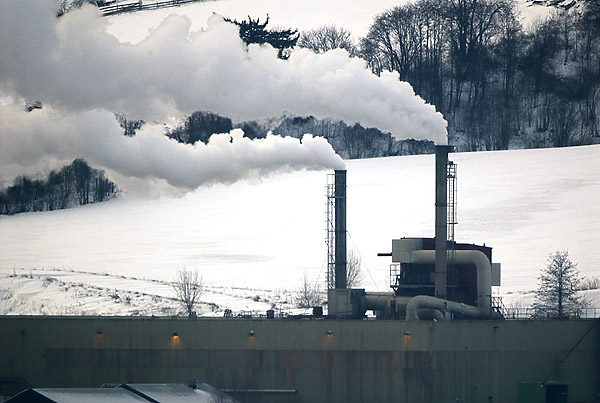 Distance
to this factory is measured to be 3.250 m, slightly more than 2 miles (for
the metrically challenged) away. Given the drizzle in the
air reducing the scene contrast, line of sight across
open water adding atmospheric turbulence, and the remote
subject demanding a really long lens for capturing it,
nobody in full possession of his senses would dream of
getting any good detail in the ensuing image. Guess you have
to guess again.
|
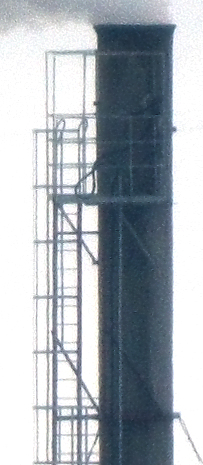 |
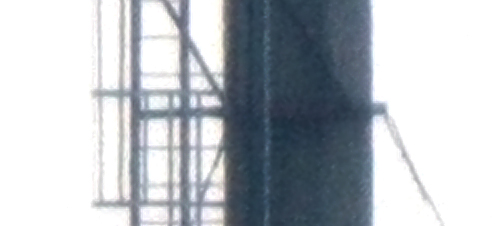
Left: 100% crop,
Right: 200% detail
D200
@400 ISO equivalency,
1200 mm Nikkor ED-IF f/11 @f/11, 1/4 sec
|
To exploit fully the potential of D200
imagery, using raw (NEF) files is the optimal approach. However,
few converters besides Nikon Capture 4.4 at this time of writing
supports D200 NEFs. I've tested with BibblePro 4.5 and Capture
One 3.73 (only beta support for D200). Nikon Capture 4.4 itself
has a user interface marred by a slightly vulgar
"XPish" quality, and it isn't a superfast performer in
any way. Although improvements have been made to Nikon Capture in
its later incarnations, this program is a memory hog if ever
there was one, needing at
least 1 GB of memory on the PC to run
smoothly. Converting a NEF from the D200 is best done on a
dual-CPU machine with 2 GB RAM or more. Do a few zooms into the
image and your machine almost stops responding. Batch processing
features are poor and rudimentary compared to those of my
preferred Bibble Pro software. However, image output quality is
superb both from D1-series as well as D2-series NEFs, so I won't
complain more than I already have.
Setting up valid comparison tests shots for
film is quite straightforward, because recorded image
magnification and the order of secondary magnification after
processing and enlargement are identical, provided the setup
incorporates a stationary subject and a camera position which is
fixed at a given distance to the subject itself. My test subject
typically is the brick wall outside my office premises, and this
part of the world is little troubled by earthquakes, so the
stationarity criteria should be fulfilled.
With digital cameras, things act a little
differently. Thus, you can easily get a setup giving identical
magnification of the image projected onto the CCD/CMOS/LBCAST
chip inside the camera. However, because chip size may differ, so
might angle of view for the end image, or chip pixel counts may
differ to result in non-identical angular resolution of the
pixels. A sound and basic principle underlying scientific tests
is that you should be able to have full control of the variables
involved and preferably change only a single variable
independently of the others.
For tests with the D200 set against the
D2X, I ran the whole gamut of procedures to ensure valid
comparisons between the contenders. To compare pixel quality
directly, I ran a separate setup in which the subject-camera
distance was changed to give the pixels equal angular view. This
approach is valid given that the performance of the test lens is
constant across the distance range involved, which I'm very
certain applies to my AFS 300 VR lens between 3 and 5 m. Since
this lens has a focal length which gradually shortens as the lens
is focused closer, and the alteration of focal length itself is
undocumented from Nikon, it is frustratingly difficult to get a
perfect match in pixel angular coverage, but I got within a
fraction of a percent of the target anyway so that'll do for this
time.
Nikon D200 vs D2X, or CCD vs
CMOS imager
(equalised angular view of pixels) |
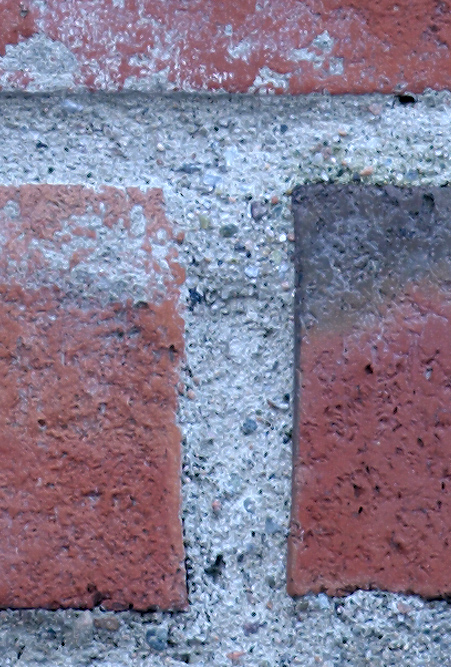 |
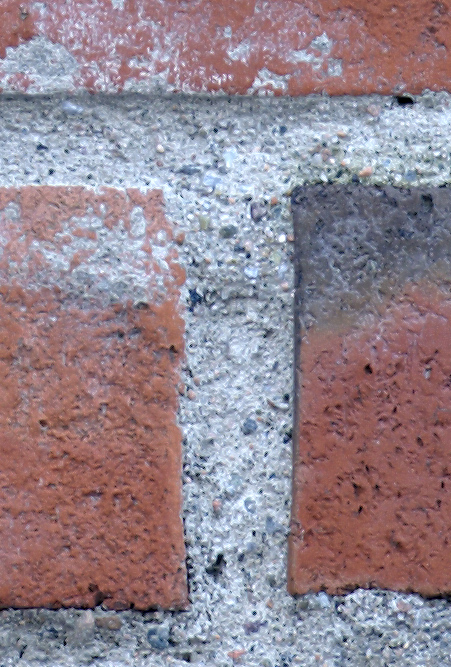 |
| D200 |
D2X
|
Test images
of my "favourite" subject, a brick wall. Shot
with AFS 300/2.8 Nikkor at f/5.6, 1/40 sec, D200 and D2X
at 100 ISO equivalency. Both crops shown at 100%
magnification, NEF files processed in BibblePro 4.5 with
later sharpening applied in Photoshop (USM: 500,0.3,6).
Sharpening applied here to make any difference stand out
better.
Besides the
fact that auto white balance gives slightly different
results with these cameras, the images otherwise are
virtually identical.
Images © Bjørn Rørslett/NN
|
I have earlier shown that the
D2X is capable of better image rendition than any recent Nikon
DSLRs. The test images depicted above indicate that the D200,
despite some 20% (planar) lower pixel number (10% linear)
compared to the D2X, holds up very well indeed. In fact, when we
equalise angular coverage of the pixels, the images are virtually
indistinguishable. So the inherent imaging quality of D200
matches that of the bigger D2X.
Now, let's move on to a real-world
situation in which we cannot that easily move back and forth. For
landscapes and suchlike subjects, you are pretty much stuck with
the perspective given by your shooting position, so how does the
lower pixel count of the D200 fare compared to that of the
higher-resolving D2X?
Nikon D200 vs D2X, or CCD vs
CMOS imager
(equal image magnification of detail) |
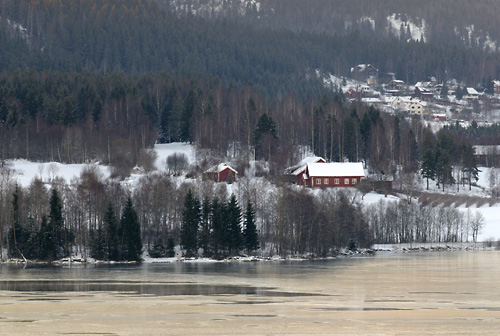
|
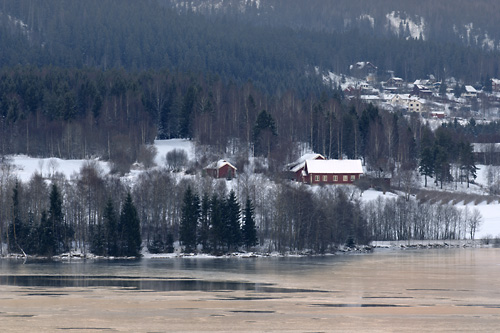
|
D200
AFS 300 mm f/2.8, f/5.6 1/20 sec
ISO 100 equivalency, auto white balance
|
D2X
AFS 300 mm f/2.8, f/5.6 1/20 sec
ISO 100 equivalency, auto white balance
|
My favourite
landscape spot for camera and lens testing. Distance to the
subject (red houses) is exactly 2 km, and I employed the AFS Nikkor 300 mm f/2.8
ED-IF (Mk.I) on a Sachtler ENG 2 series tripod for these
shots. (Norwegian
weather this time of the year ensures only a
"half-light" will exist, so getting 1/20 sec
exposure is really good, but given a tripod up to the
task, critically sharp images nevertheless result).
It is readily
apparent that both cameras deliver images with crisp
detail and nicely rendered colours, but the D200's
automatic W/B is just slightly warmer than the D2X's,
which utilises its external sensor to get an even better
balance.
Images © Bjørn
Rørslett/NN
|
"Pixel-peeping" being
the current fad, I'll try to satisfy the cravings of that
frenzied mob by some crop depictions. To show any difference at
all, the ordinary 100% crops wouldn't suffice at all, so herewith
you can gorge yourself with 200% crops. Just keep in mind that
these crops equal looking at poster-sized prints at point-blank
range.
| |
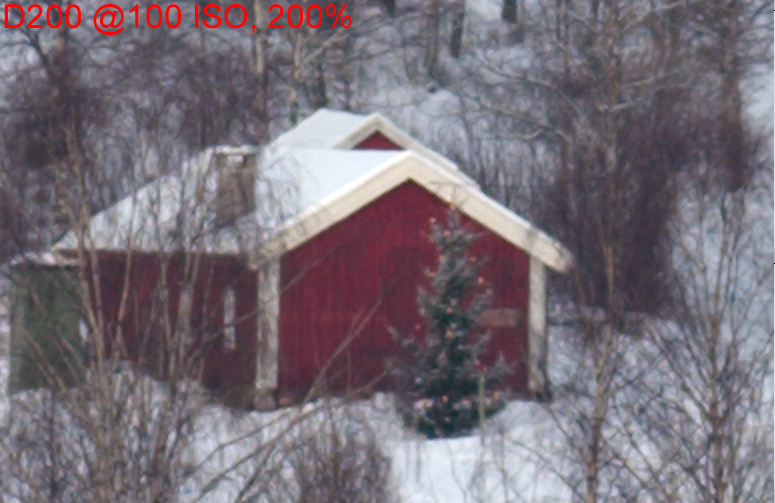
|
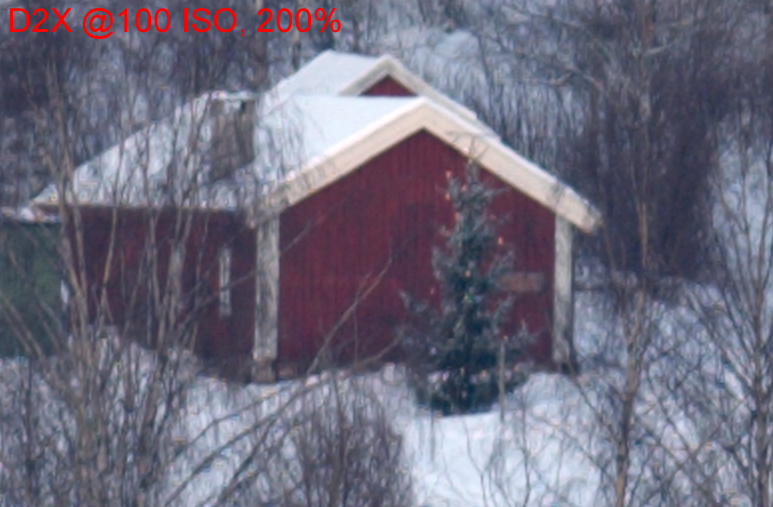
|
| |
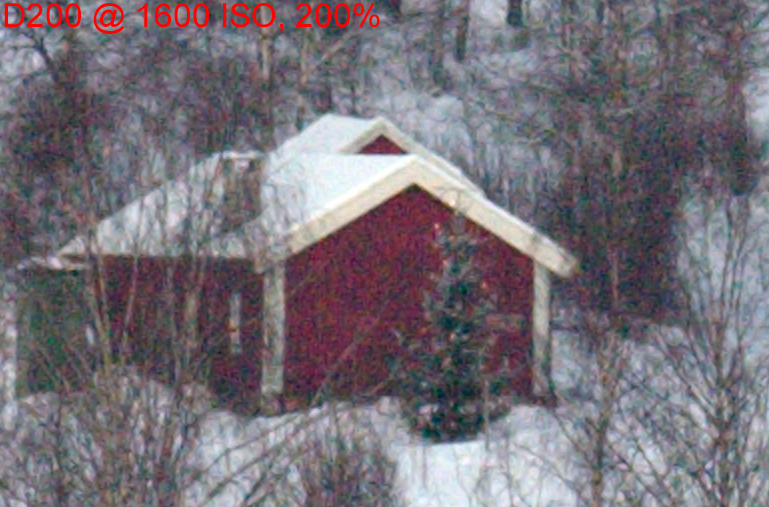
|
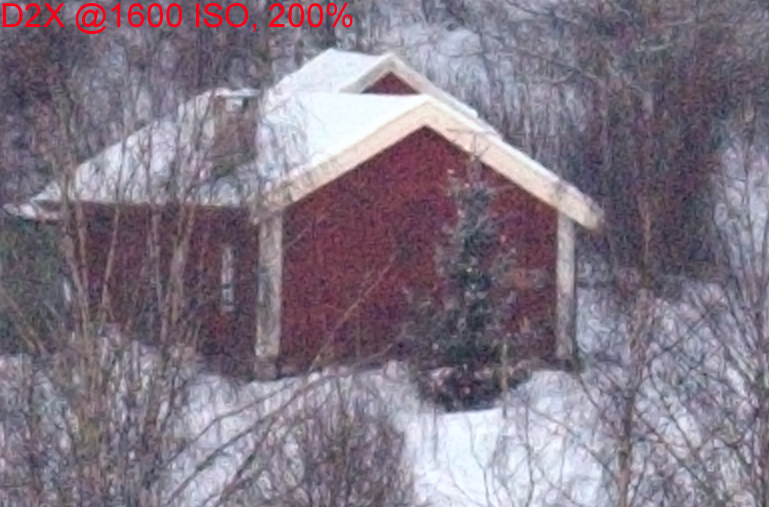
|
All images
© Bjørn Rørslett/NN
|
|
Here, the
crop is 200% (from pixel size), corresponding to a print
size of some 50 x 70 cm (20 x 30"). Do keep in mind
you now are in the same position as looking on a
poster-sized print placed almost at the tip of your nose.
The image
coherence is high, detail is smooth although some
softening inevitably occurs, and grain is invisible on
both 100 "ISO" images. There is a considerable
increase in graininess at 1600 ISO equivalency
concomitant with a beginning loss of shadow detail, but
again, the image quality is surprisingly good for both
systems. The D2X has the slight advantage with 10% more
image resolution (linear scale) due to its 12.2 MPix
sensor compared to the D200's 10 MPix.
|
Skin tones are claimed to be inaccurate
with Nikon DSLRs, and many studio photographers swear by the Fuji
models instead. So did my friend Ola-E. Hofshagen, who on my
request ran a studio session with a fair lady to investigate the
performance of D200. He told me afterwards that he'll never use
his Fuji S3 again for this kind of work.
D200
Skin Tones
|

D200 with Tamron 90 mm f/2.8 lens, 100 ISO equivalency
© Ola-E. Hofshagen
|
| Skin tones are superb
with D200, here recorded in a studio setting and running
the camera on default options. The original, full-sized
image can be downloaded as a jpg here (courtesy Ola-E. Hofshagen). Note
this image shows an example of mild Type II striping
(discussed in the Noise section) |
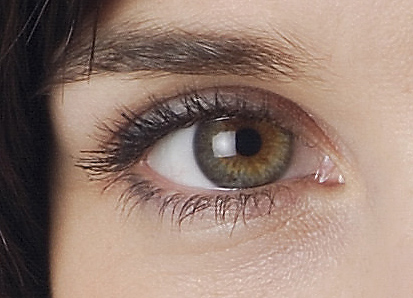
|
| The crop above is at 100%
(from pixel size). |
| The image coherence is
high, detail is smooth although some softening inevitably
occurs, and grain is simply not visible. |
My conclusion is that you will get image
quality from the D200 to satisfy even the most critical needs,
for any application to which 35 mm systems can be used. While the
D2X might just yield a trifle higher image quality, we are truly
nit-picking in order to place one of these cameras before the
other.
Questions of image noise and imperfections
including the hotly debated "striping" (aka
"banding") issue are addressed in the next section, so
keep on reading to find out more.












